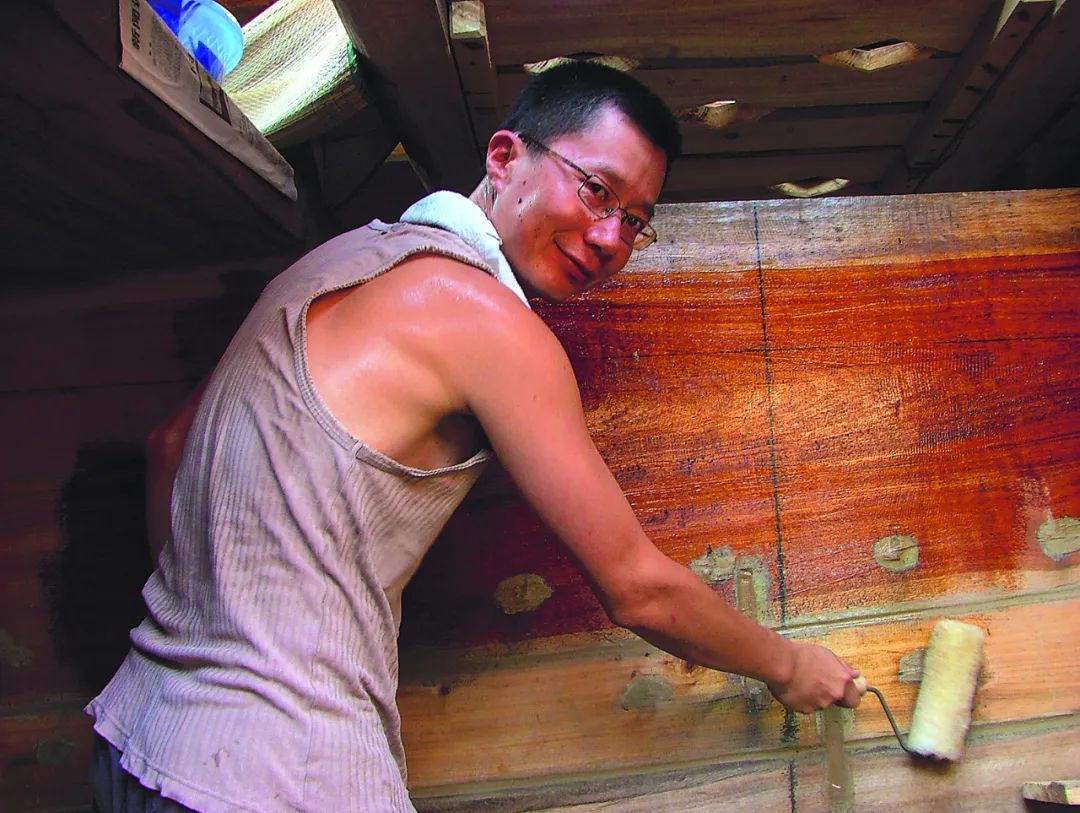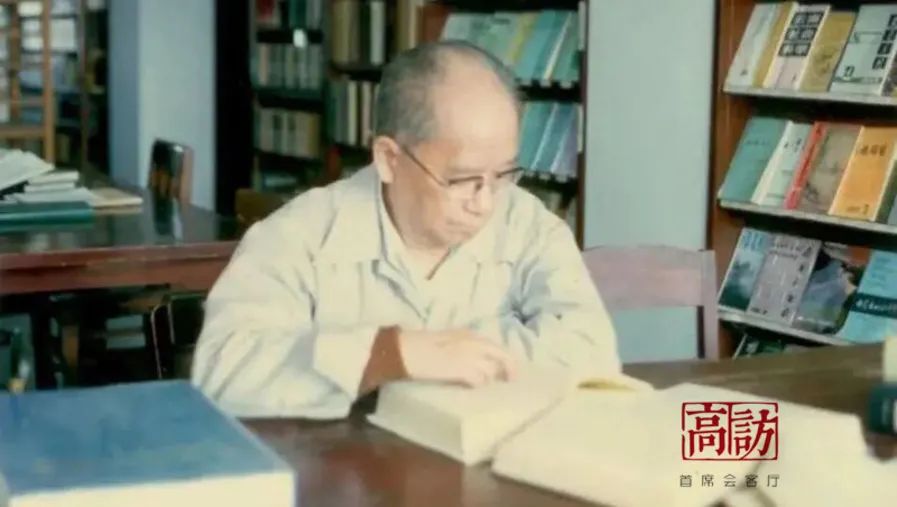He spent 8 years of Fuyuan a ancient wooden sailing boat, crossing the Pacific Ocean
Author:Journal of China Science Time:2022.09.11
Text | "China Science News" reporter Hu Yanqi

In 2007, Xu Lu brushed the cabin oil at the "Princess Taiping" construction site. Forestry
Xu Lu, who grew up on the beach for 8 years, has been obsessed with Chinese -style sailing boats to restoration of an ancient wooden sailing boat "Princess Taiping", allowing it to cross the Pacific Ocean.
He has used more than 20 years to transform into an independent scholar from a rivers and lakes, and rescue the historical relics of Chinese sailing to create French -style historical relics.
Recently, a non -fictional work "Boat of the Boat" completed by Xu Lu for 3 years was officially launched. He is more willing to define it as a "construction manual" for ancient Chinese sailboats.
"No matter how many years, as long as you think, you can compare with it to build an ancient sailing boat."
Such a Xu Lu, rigorous and romantic.
Freedom
Children growing on the beach have a dream about running and freedom. The ship is the carrier of dreams.
Xu Lu is from Zhe'an, Fujian. When he was a child, his father had been a factory doctor for a short time at the Gongkou Shipyard, and his kindergarten time was spent on the ship.
His father would take Xu Lu to visit some masters, and he saw a lot, so that he could recognize which one was the master on board at a glance.
Later, a family of Xu Lu settled near Xiamen Lugjiang Wharf, and could still get up to the big sailboats in Xiamen.
In 2000, 37 -year -old Xu Lu accidentally read a book about the history of ancient Chinese maritime transportation "Seven Sea Yangfan". It was this book that made him interested in the history of navigation and was curious about the childhood sailing boat.
However, the traditional Chinese wooden sailing boat gradually withdrew from the stage of history due to the changes in the environment.
At that time, Xu Lu, who was working in a subordinate company in China Ocean America, had a super bold idea: adopting traditional Chinese shipbuilding French style, restoring an ancient wooden sailing boat, driven by wind and ocean flow, to the world, to be great time to be great Sailing.
Xu Lu had "left" Australia in his youth and had two years of studying abroad, but he consciously had limited boundaries with the world.
"If I made a Ming Dynasty boat, then I would be welcomed and accepted to any place. This ship will be me."
Next, Xu Lu needs to solve two problems: what exactly does the ancient sailing ship look like? How to make it?
His initial idea was very simple, looking for literature, and at the same time asked historians. But in reality, he discovered that "older generations of scholars have studied great history, and they really sort out and deconstruct the ancient Chinese sailboat creation of French literature and materials."
Before walking in the fog of dreams, Xu Lu couldn't find the direction for a time. It wasn't until he read Mr. Liang Sicheng's "History of Chinese Architecture" that he really saw what kind of obstruction he was facing.
"Unique architecture, for thousands of years, it has been completely in the hands of the craftsman. Most of its artistic performance is the result of unconscious teachers and evolution. These unknown craftsmen have left many great miracles for the world in the real thing. Theoretically, but not leaving an analysis or exaggeration for the creation of itself or its creation. "Liang Sicheng said that even if there is a handed down book," the scriptures are different, the scholars are puzzled, and the craftsman is difficult to be in the text. Unveiled, and the Dharma is incomprehensible. The book is the mystery of later generations. "
"The ship is part of the building. The architecture is also known as the craftsmanship in my country. There are very few historical materials in ancient relics. Even if there are, there are few scholars to interpret it. No one is noticed. The construction method. "Xu Lu realized that the only way was to conduct a French -based field survey of wood sailing.
Since 2001, Xu Lu has been away from the seven -star islands at the junction of Fujian and Zhejiang, and has walked south to Dongshan Bay, near Guangdong Province, visited dozens of shipbuilding workshops and hundreds of shipbuilding masters, and completed 3324 kilometers. The trip to the Fujian Coastline also found the shipbuilding skills mastered by the masters of the coastal shipbuilding land of Fujian, which is basically the continuation of ancient technologies.
Knights
For Xu Lu, the field survey on the shipbuilding land of Fujian, as if the "Xia Ke Xing" on the rivers and lakes, and the family names of the hidden surnames gradually appeared.
Zhangzhou is an important node city on the Maritime Silk Road, and Zhangzhou Moon Port is one of the four major commercial ports in Fujian in the Ming Dynasty.
In 2005, Xu Lu found a rare folk shipbuilding map at the Zheng's Chongxing Shipyard at Yuexi River.
The score was drawn by Zheng Wenqing, a 84 -year -old father, Zheng Wenqing, who recorded 16 types of transportation ships, fishing boats and passenger ships built by him from 1919 to 1937, as well as their names, size and structure. This is the only Chinese -style sailing folk shipbuilding map that is by far. Xu Lu was a treasure.
"But the map of each ship is two pages of paper. They look very beautiful but puzzling, just like the Tianshu." Because many ships on the map are used in the southern Fujian Chinese characters, and even there are even there are even the sea, and even there are even there are even the Hai Cheng cavity, and even there are even. The industry's self -made word for the local shipbuilding craftsmen is the same as the rune.
As a result, Xu Lu immediately decided to worship Zheng as a teacher. With the help of Mr. Lao, in combination with the investigation of local traditional shipbuilding French -style, Xu Lu conducted a detailed interpretation of Haicheng Zheng's shipbuilding map, and finally turned all the maps into a sketch of shipbuilding engineering under the concept of modern engineering.
The more and more field surveys are done, and more and more notes and recording of the accumulation of the case. Under the guidance of the pioneers and founders of contemporary Chinese navigation history and shipbuilding history, under the guidance of Yang Yan, the founder of the history of shipbuilding and the founder of Dalian Maritime University, he began to classify the data of each ship and the oral shipments of each master, and to classify and organize it. The data fragments collected at different times are seated, and finally established their own field survey database. The progress of the front -end field survey is rapid, and there are unexpected breakthroughs in the mining of literature on the back -end literature.
Document records about the construction of Chinese sailboats are the most abundant in the Ming and Qing Dynasties. The "Map of the Map of the Jieying War of the Mandarin Mandarin" is one of the important manuscripts of the Qing Dynasty. In 2005, German scholars found its manuscript in the Berlin National Library, and in the field survey of traditional shipbuilding places in Fujian, a master gave him a copy of his treasures to Xu Lu.
Another important Qing Dynasty technical document "Example of the Outside of the Naval and Shipping of Fujian Province". This disability eventually "combined" in the hands of Xu Lu.
These two historical materials are the official repair documents of the work quotas and construction standards of several sailors such as the main warships such as caught boats. The specifications of each iron nail in the ship.
"Its record is detailed, and its scientific and engineering significance is rare even in the wooden sailing ships of offspring." Xu Lu emphasized.
The rushing boat was originally a fishing boat on the coast of Fujian and Zhejiang in the Ming and Qing dynasties, and it can also be used as a merchant ship. Because of its "hull wide, fast driving, exchanging ocean, not afraid of huge waves", the Qing court was selected as the main warship outside the sea. The design of rushing warships adopts the traditional shipbuilding design method of Fujian.
The design principles, design models, main component names and interpretation of the design of the boat in these historical documents, the accumulation of the field survey, etc., gradually integrate in the collision with the accumulation of field surveys. The historical prototype of rushing the boat gradually became clear.
One is ideal, the other is reality
In the end, Xu Lu chose the first in the "Example of the Obstacles of the Outside of Fujian Province", that is, four feet and six feet long rushing boats as prototypes for restoration.
With sufficient literature mining, Xu Lu first listed the list of all the components required for the creation of a rushing boat, and according to the graphic and marked, the first more important component in the list of rushing ship components Corresponding and positioning one by one.
Then, based on the knowledge obtained by the previously obtained by the Fujian coastal shipbuilding field survey and the folk shipbuilding map, the remaining unknown components in the list were classified and located.
Finally, the list of components of the complicated rushing ships is classified and summarized in accordance with the ship system, promotion system, targeted system, berth system, and coating system. Book".
There are 977 wooden components and 27 iron parts that rushing to warships. It is to nail with 17,886 iron nails, 1372 catties of gray ash, 553 catties of tung oil, 447 catties of mesh, 447 bamboo silk 447 Perform the gap.
"If I take the house as an example, I have found the pattern of the house, and each building block is ready. How to fight the house can only find the most experienced master." Xu Lu said.
From 2006 to 2007, first proposed a construction plan by the 6th and south groups of the north and south groups of Fujian, and then the three groups were compared to the recovery construction plan. Finally, it was created by the team of Master Jinjiang Chen Fangcai. The total length of 15.5 meters, 4.56 meters wide, 30 tons of drainage, and 13 cabin rushing warships recovered and built, and named the "Princess Taiping Princess".
The "Princess of Taiping" reaches 80%of the historical prototype. It is based on fir wood, camphor trees, and acacia trees. No bolt, plastic, chemical glue and other later materials are not used.
In January 2008, the "Princess Taiping" tried the first trial, and in February, it was successfully trial from Quanzhou to Xiamen.
In 2008, the "Princess Taiping" tried it for the first time. Qiao Yang Photo

However, "the perfect story of a perfectionist weaving often does not have a perfect ending."
Because the subsequent navigation budget did not fall, the "Princess Taiping" was eventually taken over by a Taiwanese company. Since April 2008, it has successfully spanned the Pacific Ocean and eventually arrived in Yurika in the United States.
Xu Lu did not participate in this final journey.
What is even more dramatic is that on the day when returned to the day to return to the shore, the "Princess Taiping" sank due to accidentally colliding with a merchant ship of more than 100,000 tons.
Chen Fangcai told Xu Lu that Jinjiang had a dozen or twenty ships that had been collided in the past. Only when the wooden boats with bolt bolt were tightened, they did not disperse. "Princess Taiping" is an exception. It did not use a bolt, but it was just hit into two, and it was rescued by the entire staff.
"In a sense, the anti -impact ability of this recovery ship is already a miracle." In Xu Lu's view, why is it a part of the test?
Shipbuilding manual
In 2004, Xu Lu met the last traditional wooden sailing boat "Jinhua Xing" on the last Dongshan Bay and the Chinese coast line in southern Fujian, and sailed with the crew for nine days and eight nights. Four years later, the last ancient sailboat sank. In 2008, Yang Yan died.
In 2009, Zheng died.
In 2019, Chen Fangcai died.
The last legend, the master of the side, and the masters of the edge, one by one, means that people and things carrying the historical memory and skills are accelerating the disappearance.
Xu Lu remembered that when he was in Haicheng, Zheng two told him one day: "Seeing fewer and fewer oil in the world. In the future, you have to re -use such a good wooden sailing boat, but no one will have ships. What records, what can I do? "
This allowed him to start thinking again, interpret the true meaning of Chinese shipbuilding French -style, restoration and construction of ancient sailing, and reproducible navigation tests.
"It is not most important to have the entity of ancient sailing. The key is to completely deconstruct and record the ancient Chinese sailboats. No matter how many years, as long as someone thinks, you can build a boat out according to this method. "
This is also the original intention of Xu Lu's writing "The Book of Creation". It not only records a non -fiction story for 8 years, and completes a practical ancient sailing construction manual.
And Zhu Jingjiang, a professor at the Department of Nationalities of the Central University for Nationalities, Xu Lu's shipbuilding experience always reminds him of the story of Norwegian anthropologist Hyadar drift from a raft from Peru to the Poluni Islands in 1948.
"Hyadar's" Lone Root "was one of my favorite books in my youth, and it was one of the reasons for my entry into the anthropological academic system." Zhu Jingjiang felt that Xu Lu should write a book and talk about it. Talking about his experience of shipbuilding and sailing, "like a self -ethnic history of a person, but also the Chinese version of" Doing Anthropology "."
Who is Xu Lu?
During the more than ten years after the "Princess Taiping", Xu Lu's story continued. He officially transformed into an independent scholar from a Chinese sailing history enthusiast and a rivers and lakes.
"There are not many scholars who have studied the history of Chinese sailing technology in China. Although there are also new and old changes, it may be less than 10 people." Xu Lu admitted.
Although he did not belong to a certain academic institution and did not have a fixed salary, he continued to engage in academic research and participate in academic activities.
In 2011, at the UNESCO's first Asia -Pacific Marine Cultural Heritage Academic Conference, Xu Lu won the best thesis award for "Experimental Archeology Methods of Ship Trip Corporation -Take Warships as an Example."
In recent years, he has collected six ancient sailing folk shipbuilding technical monographs in the field investigation. He is currently planning and compiling the monograph on the "French French" of Chinese Sailing.
He also customized a small -sized single wooden sailing boat "Nankai II" to cross the Taiwan Strait test, hoping to finally prepare a set of monograph on Chinese wooden sailing driving to fill the gap in existing literature.
In the preface of "The Book of Creation", Bao Le Shi, a well -known historian and sinologist in the Netherlands, used two -thirds to explain the identity of "non -vocational archeologists".
Without him, the unofficial identity of "independent scholars" often brings the eyes of Xu Lu questioning.
"Every time I have finished the dissertation at the academic seminar in China, the most commonly questioned in the question, answer and discussion session is: how do you solve research funds? What life do you rely on?" Xu Lu said, this is actually what he has been thinking about always thinking And the problem of hard work.
He has served as the person in charge of the major project of the National Social Science Foundation, initiated and hosted the records of the history of the Xiamen Port Marine Mouth History, undertake the concept planning plan of the Xiamen Maritime Museum, and served as a reviewer for some academic journals ... In order to raise academic research For funds and project funds, he also set up a provincial social organization.
Xu Lu said, "If you want to do it like this, 20 years have passed."
"China Science News" (2022-09-09 The 4th edition of the original title "As long as you want, you can build an ancient sailing boat"))
Edit | Li Yun
Capture | Zhihai

- END -
The novel "Steel City" created by Huangshi writer shines in Beijing!

September 9thThe first style of the new book Steel CityHold in Beijing Book Buildi...
Thirty years of death of Tan Qizheng: The person who explored between time and space 丨 The "back of the master" of the high visitor

One day in the early spring of 1992, when Ge Jianxiong dealt with his teacher Tan ...